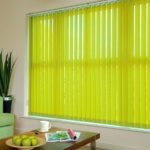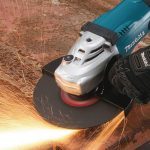Customers and finishers often face increased material consumption. For example, glue for tiles, which can cost decent money. Options for savings that do not entail negative consequences are real. It is only necessary to find out what exactly is associated with the unjustified consumption of glue.


Some masters make the installation of tiles, ignoring the alignment of the surface. Therefore, they have two options:
1. Adjust the curvature by adding a mixture under each tile. If the surface curvature is serious, the glue consumption will be gigantic, and the work will somehow advance. Almost all modern mixes for the installation of tiles give significant shrinkage, which means sliding tiles, the presence of voids under it, as well as an unacceptable final quality. Only a very experienced master is able to perform such work at a decent level. But he, most likely, would prefer to use not cement, but a cement-sand mixture.
2. Lay ceramic tiles on an uneven surface, repeating its bends and inclinations. In this case, the overspending of the material will not be so significant, but it still will not meet the limits specified by the manufacturer. This despite the fact that the resulting plane will be far from ideal.



The most optimal way to save tile glue is to plaster the surface “under the beacon” when it comes to walls. A base close to ideal will allow a minimum solution layer to be applied - 3-4 mm. Making it even less prohibited by SNiPs. For such a layer, the use of a notched trowel with a tooth depth of 6 mm is necessary. With this installation method, the material consumption will be declared 3-4 kg / m2.
The surface of the floor for laying tiles is usually leveled with a cement-sand screed “under the lighthouse”. For floor tiles, the technologically correct layer thickness is 5-6 mm. In this case, a spatula with a tooth depth of 8-10 mm is required, depending on the dimensions of the mounted product.



A completely acceptable method of saving is to replace the adhesive with a cement-sand mixture. But the master’s lack of experience will lead to high costs. Another acceptable method for walls is to replace masonry mortar with bitumen mastic. But then you need straight, smooth walls with minimal hygroscopicity. By adding gypsum to the glue, savings can also be achieved. The reliability of the solution is extremely doubtful.

-
 Repair in the apartment: where to start?
Repair in the apartment: where to start?
-
 Blinds are vertical fabric
Blinds are vertical fabric
-
 Facing brick for facade decoration, its options
Facing brick for facade decoration, its options
-
 How to choose furniture for the nursery?
How to choose furniture for the nursery?
-
 Common mistakes when installing chandeliers
Common mistakes when installing chandeliers
-
 Why you should not install windows from different materials in one apartment
Why you should not install windows from different materials in one apartment
-
 The subtleties of building houses with glass walls in Russia
The subtleties of building houses with glass walls in Russia
-
 Original and roomy bookcase
Original and roomy bookcase
-
 How to make faux marble easily
How to make faux marble easily
-
 How to remove material glued with liquid nails
How to remove material glued with liquid nails
-
 What problems leads to a lack of air exchange in the room
What problems leads to a lack of air exchange in the room
-
 Why does the grinder work, but the disk does not spin
Why does the grinder work, but the disk does not spin
New publications are published daily on our channel in Yandex. Zen
Go to Yandex. Zen


